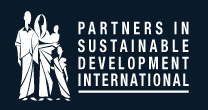Global Poverty Reduction: A Century-Long Challenge
The World Bank’s 2024 report, “Poverty, Prosperity and Planet,” presents a sobering forecast for global poverty reduction efforts. At the current rate, lifting half of the world’s population out of poverty could take over a century. This projection underscores the urgent need for effective international development strategies to address global poverty reduction challenges.
The report reveals that nearly 40% of the global population lives below $6.85 a day, with recent economic setbacks worsening this outlook. Limited access to education, job opportunities and resources creates significant barriers to economic advancement for many individuals, hindering global poverty reduction progress.
Global Poverty Reduction: Challenges
Recent economic challenges have disproportionately affected low-income countries, impacting global poverty reduction efforts. Inflation and rising public debt have limited essential investments in social services. The World Bank reports that 26 of the poorest countries are in their worst financial shape since 2006.
Conflict-prone regions, particularly in sub-Saharan Africa, face persistent disruptions that prevent consistent social services and undermine economic resilience. These challenges make it difficult for affected populations to achieve stability and progress, hampering global poverty reduction efforts.
Debt Relief Efforts and Direct Support Programs
The World Bank, in partnership with the International Monetary Fund (IMF), continues to implement the Heavily Indebted Poor Countries (HIPC) Initiative and the Multilateral Debt Relief Initiative (MDRI). These programs have provided around $99 billion in debt relief to 37 countries since their inception. In December 2023, Somalia reached the HIPC Initiative Completion Point, receiving $4.5 billion in debt relief.
The World Bank supports various cash transfer and social safety net programs. For example, the Debt Management Facility (DMF) is a multi-donor trust fund that assists low-income countries in developing sustainable debt management frameworks.
Education, Workforce and International Collaboration
The World Bank invests in human capital development through various education projects. While specific examples aren’t provided in the search results, the World Bank emphasizes the importance of education and skill development in breaking the cycle of poverty.
It also works closely with other international organizations to address poverty. For instance, the Common Framework, endorsed by the G20 and Paris Club in November 2020, aims to deliver long-term, sustainable solutions to lower-income country debt vulnerabilities.
Positive Developments
While the overall projection is concerning, there have been notable successes in poverty reduction efforts:
Between 2015 and 2018, the number of people living in extreme poverty globally fell from 741 million to 689 million. Several countries, including Bangladesh and Kenya, have made significant progress in reducing poverty rates through targeted interventions and economic reforms.
Innovative technologies and digital solutions are emerging to address various aspects of poverty, from mobile banking to agricultural improvements.
Global Poverty Reduction: The Future
The World Bank’s findings highlight the need for significant, coordinated global action to address poverty. While the challenge of global poverty reduction is immense, there are reasons for optimism. With targeted investments, strategic policy shifts, and international cooperation, progress can be accelerated. Organizations worldwide are committed to ensuring that every individual has the opportunity to rise out of poverty, working towards a more equitable and prosperous future for all.
